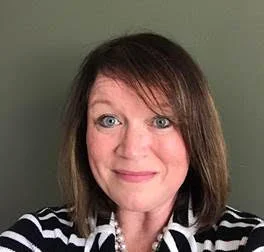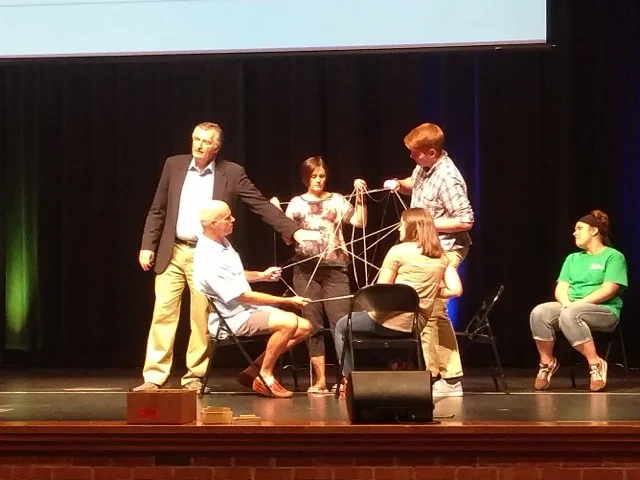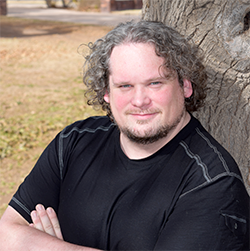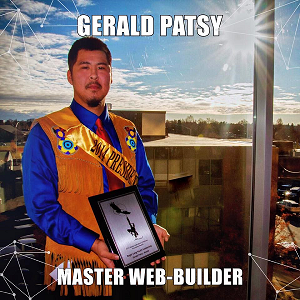
Brightway’s Blog
Articles and information about successful students, schools, families, and communities.
Strong in Every Way
For Kris Devereaux, Chief Academic Officer, and her colleagues at Zionsville Community Schools in Indiana, strengthening the Social and Emotional competence of students throughout the district is a top priority. And they have invited Brightways Learning to help them reach their goals by implementing Kaleidoscope Connect’s Integrative Youth Development (IYD) framework.
For Kris Devereaux, Chief Academic Officer, and her colleagues at Zionsville Community Schools in Indiana, strengthening the Social and Emotional competence of students throughout the district is a top priority. And they have invited Brightways Learning to help them reach their goals by implementing Kaleidoscope Connect’s Integrative Youth Development (IYD) framework.
IYD is a strengths-based approach that teaches adults how to focus on what is right with youth and help kids build Webs of Support by identifying key individuals (Anchors) who provide authentic caring and high expectations. This, in turn, builds resilience, equipping youth with the SEL skills, attitudes, values, and confidence they need to thrive amid life’s challenges.
The district’s journey to improve SEL – and to integrate IYD – began about a year ago. The administrators, led by Superintendent Scott Robison, began working closely with their K-12 counselors to learn how they could better meet the needs of students at all levels.
“Something that became very apparent to all of us after listening to our counselors was that we really needed to strengthen the focus on the social and emotional aspects of our students,” said Kris. “Our district has done well academically for many years, but we realized we need to make sure we are giving the same attention to the social and emotional well-being of the kids.”
Superintendent Robison had learned about IYD after reading Helping Kids Succeed*, a handbook co-written by Derek Peterson, Youth Development Expert and partner of Brightways Learning. The book explains how the principles and practices of IYD have the power to change the trajectory of students’ lives by building support networks (Webs of Support) that cultivate caring and connected schools and communities.
Superintendent Robison gave the book to all counselors and administrators. And after reading it, the counselors agreed that this approach made sense for young people in Zionsville.
Strong in Every Way
Superintendent Robison then developed a human capital campaign called Strong in Every Way™ that included three pillars:
Developing Webs of Support
Developing assets and resources
Creating cultures of understanding
The district began putting the pieces into place. In addition to their commitment to IYD, they added Elementary Wellness 360 (PE + SEL), hired an Extended Experiences Coordinator at the high school to connect students with their passions, started a new Career-Based Experiences program, and provided Implicit Bias training for district employees. In addition, Zionsville changed school start times to match the research on adolescents’ need for school to start at or after 8:30 AM, and the district collaborated with The Gift Of Failure author Jessica Lahey to do community book studies online and in person, and to have Lahey visit the district to provide professional development for teachers and a public presentation attended by more than 800 parents.
With help from funds awarded by a Lilly Endowment Implementation grant, Kris and six of her colleagues attended a presentation given by Derek at the University of Indianapolis in spring of 2017. “Derek’s presentation confirmed that IYD absolutely aligned with Dr. Robison’s vision and the campaign we were developing,” said Kris, “We immediately booked Derek to kick off the campaign at the beginning of the 2017-18 school year.”
Grant funds were also utilized to send four people – Dr. Amanda Slonaker, clinical neuropsychologist for the district; Lynn Kissel, the district’s Community Development and Residency Specialist; and two community members and parents, Erin Bivans-Johnson and Amie Peele Carter – to Phases 1 and 2 of Kaleidoscope Connect’s IYD Academy in Edmonton, Alberta last May.
The Academy qualified them to train others in the district to share the IYD story so that all parents and community members understand key IYD concepts like: being an Anchor to students, throwing and catching supports (strings), being aware of events that disrupt the Web (scissor cuts), and expanding a young person's abilities, talents, and resilience (growing the balloon).
Three months later, on August 3, 2017, the district formally kicked off the Strong in Every Way™ campaign faculty and staff training, with Derek leading an action-packed day!
Beginning early in the morning, and lasting well into the evening, Derek delivered hands-on IYD workshops and keynote presentations for nearly 2,000 people including all district administrators and staff members, students, parents, community members, and guests from surrounding communities.
“It was an amazing, motivating day,” exclaimed Kris. “Derek exceeded our expectations. He reminded everyone that we are here for the kids, and instilled the importance of coming together as a community to build strong Webs of Support for our youth.”
As the new school year begins, the district is continuing to infuse the principals of IYD into their faculty, staff, Board, and key parent volunteers. Zionsville will continue sharing information about Anchors and Webs of Support with community organizations, places of worship, students, parents, and community members.
“I was interested to see how the first day of school, just five days after Derek’s kickoff, might feel or look different than it has in years past,” said Kris. “I immediately saw evidence that Derek’s work with the staff had a direct impact on the lens through which we are viewing students.
“As I visited the various schools, I found so many teachers taking time to really get to know the students. They weren’t just focusing on curriculum or talking about rules and procedures, but engaging the kids in interactive, getting-to-know-you games and activities.
“At one school, all students wore nametags so anyone who saw them in the hallway could call them by name. And several teachers were doing Derek’s “balloon-bop” activity with kids, talking about the importance of strong Webs of Support and not letting any of their classmates fall through the cracks. It was very impactful.
“One student who had worked with Derek was in the hallway while a brand-new student was receiving a tour. She immediately walked over to the new student, introduced herself, and asked the student to introduce himself. ‘I’m here for you,’ she said. 'If you see me in the hall be sure to wave.’ It was very touching to see that Derek truly got through to the kids who participated in the kickoff.
“Parents commented that in the past they received forms to get just basic information about students at the beginning of the year. This year the forms asked questions like ‘what does your family like to do together?’, and ‘what can you tell us about your child’s resiliency and grit?’ Parents felt that the schools really wanted to get to know their kids.
“And we know kids are bringing it home with them. A parent contacted me and said that she was thrilled that her son was using the Webs and Anchors language, even referencing several of them during a family game night.”
So What’s Next?
The district has applied for a Lilly Endowment grant that, if awarded, will help fund their four-year plan, including building in measurements to gauge success with longitudinal data.
“Not all of our plans are dependent upon the grant,” said Kris. “Whether or not we are awarded, we plan to continue reinforcing throughout the year what we have learned. But if we do receive the funds, Derek will be our first phone call so we can continue to have him work with students and staff for the next four years!”
Derek and the team at Brightways are excited to work with the Zionsville students, staff, and community to help make their Strong in Every Way™ campaign a success. “We look forward to supporting Zionsville’s vision,” said Derek Peterson, "and working alongside them to build a caring, connected community with resilient students and the adults who are equipped to support them."
*Helping Kids Succeed--The Hastings Way, published in 2014, was written by and for the people of Hastings, MN along with Derek Peterson, partner of Brightways Learning and creator of IYD.
Youth advocate encourages webs of support to build resiliency
By Heather Lusk of Current in Zionsville
Why do some children thrive while others fail?
That was the question youth advocate Derek Peterson explored as he spoke to more than 1,500 community members over two sessions Aug. 3 after meeting with educators, Zionsville Community Schools staff and selected students.
By Heather Lusk of Current in Zionsville
Why do some children thrive while others fail?
PETERSON ILLUSTRATED A “WEB OF SUPPORT” TO HELP YOUTH THRIVE (PHOTO BY HEATHER LUSK)
That was the question youth advocate Derek Peterson explored as he spoke to more than 1,500 community members over two sessions Aug. 3 after meeting with educators, Zionsville Community Schools staff and selected students.
Peterson believes that creating a web of support for youth is a big factor, illustrating the concept by asking volunteers to act as anchors connected by crisscrossed strings to hold a balloon.
Adult anchors serve as support for each child whether they are teachers, family members, family friends, coaches or mentors. Ideally each child needs at least five caring adults in their life, Peterson said. The anchors create a web of protective factors (shown with string), whether concrete like food and a home or conceptual like courage and integrity. The balloon, or youth, won’t fall into the cracks of the web according to Peterson if they have strong support or if they “fill their balloon.”
“If you build the web of support the safety net takes care of itself,” Peterson said.
Peterson said that youth with strong webs become more resilient to social challenges and thrive in overcoming adversity and helping others.
“Your kid is more likely to thrive when they’re more connected to other people,” Peterson said. “Our data says every kid needs a personal village.”
He encouraged parents to see kids in a full spectrum of color versus the black and white of a good kid or bad kid.
“Accentuate the positive and that affects the whole color spectrum,” he said as a way to interact with teens. “Web up, because you will be more resilient if you have a web of support.”
As an expert in the field of youth development, Peterson was sponsored by ZCS as part of the Strong in Every Way initiative.
4 Tips to Increase Student Resiliency
Within the Kaleidoscope Connect framework, we do not ask youth, “How smart are you?” Instead we ask, “How are you smart?” By looking through this strength-based lens, we celebrate the unique talents and intelligences that every youth has.
To help youth grow their resiliency, here are 4 tips to support them in the development of their individual intelligences:
By Amy McDonald
“Growing your Balloon” is one of the factors that our Kaleidoscope Connect full-color framework teaches and is represented by the color Green.
Green (the Balloon) represents each youth and their innate characteristics, natural abilities, and talents.
There are five areas we measure to determine the size – or resiliency – of the individual Balloon: Grit/Optimism, A Sense of Wonder, Gender, Positive Social Orientation, and How I Am Smart.
Within our framework, we do not ask youth, “How smart are you?” Instead we ask, “How are you smart?” By looking through this strength-based lens, we celebrate the unique talents and intelligences that every youth has.
To help youth grow their Balloons (their resiliency), here are 4 tips to support them in the development of their individual intelligences:
Take time to learn about the many different types of intelligences. Often we think about “being smart” as being “book smart” or “school smart,” when in reality there are many ways to be smart. In 1983, at Harvard University, Howard Gardner developed the theory of Multiple Intelligences. His theory was that measuring only IQ was too limiting. Instead, Mr. Gardner proposed eight kinds of intelligences: verbal, logical, visual, musical, naturalistic, kinesthetic, interpersonal, and intrapersonal. Edutopia provides an excellent recap of Gardner’s theory: http://edut.to/2f2efol.
So, how do you go about identifying how someone is smart? There are many online assessments and surveys to support youth in finding where their intelligences lie (here is just one example: http://edut.to/2fmDORH). These assessments ask a series of questions that result in a rating for each intelligence. For example, if you are a strong visual learner, your score for Visual Intelligence will be high, whereas if you are not as strong in the area of Musical Intelligence your score there will be lower.
Connect youth with adults who can amplify their intelligences. As we connect with youth, we cannot be everything that every youth needs. Get to know youth better – talk to them, spend time with them – and find out where their intelligences are strong. If you are strong in the same area, then engage in activities that amplify this intelligence. If you are not strong in this area, find other adults to whom you can connect to the youth. Connecting youth to more adults will thicken their Webs of Support!
Celebrate the unique intelligences of youth. Seeing youth through a full-color lens ensures that we focus on many aspects of that youth, including unique talents and intelligences. It takes all types of individuals to make up this wonderful world. Take time to celebrate these unique intelligences and the youth’s progress as they realize and grow them. Some ways to celebrate include:
Inviting people to youth performances
Recommending youth for specific activities/responsibilities because of their unique intelligences
Sharing accomplishments of youth with others
Giving clear and concise feedback
Contact Brightways Learning to learn more about Kaleidoscope Connect’s full-color framework.
Amy has more than two decades of experience in K-12 education, including English Language Learning, classroom teaching, Lead Teacher, and School Counselor. She has a Bachelor’s in Linguistics, a K-8 Type B Teaching Certification, and a Masters in K-12 School Counseling. She has worked in youth development since she started in education. Currently, she leads Kaleidoscope Connect events with both youth and adults in the United States and Canada. Amy provides a fresh look at youth development as she continues to work in multiple school districts and youth and tribal organizations in Alaska and outside the state.
Five Ways to Support Adults (Anchors)
“Caring for the Carers” is one of the principles that our Kaleidoscope Connect full-color framework teaches, and it is represented by the color Indigo.
By David “Pav” Pavish, Developmental Ecologist at Brightways Learning
“Caring for the Carers” is one of the principles that our Kaleidoscope Connect full-color framework teaches, and it is represented by the color Indigo.
In order for the “Carers” (adults who anchor students) to be effective, they must also have strong support systems of their own. When Carers have their own adult Anchors and healthy webs of support, they are in turn able to support students in a healthy way.
Here are just a few examples of ways Carers can be supported by their Anchors in their own webs of support:
Tangible Gifts. Often, when thinking about how to express gratitude, we buy an impersonal item from a store, wrap it, and give it to the Carer. Although most gifts are appreciated, try to think outside of the box. Through inquiry, discover the Carer’s personal preferences and give gifts that amplify those preferences. For example, if they love to go to movies, buy them tickets to a local theater. If they love sweets, surprise them by leaving a chocolate bar on their desk. Simple, thoughtful gifts often have the most value and meaning.
Time. There are two ways time can be given to a Carer: The first is spending quality time with a Carer. This shows that you truly enjoy their company and value them as people. Small acts - such as inviting the Carer to coffee on the weekend or grabbing a bite to eat after work - can go a long way toward helping them feel loved and supported. The second is giving quality time to the Carer, like offering to babysit their kids so they use their movie tickets. This enables the Carer to have more time to spend in ways they choose and cherish.
Public Recognition. For some Carers, being publicly recognized for their service or effort can make them feel amazing! To be acknowledged for a job well done in front of peers, supervisors, or even students, can motivate someone to continue doing great work.
Private Recognition. Some Carers may be uncomfortable with public recognition. Ask simple questions to discover their preferences. Often, a private conversation that acknowledges your appreciation and admiration can go a long way and make a big impact.
Opportunities to Anchor. For some Carers, the opportunity to Anchor youth is part of who they are and how they work. However, some Carers may feel they do not have much to offer, or may find it challenging to engage with youth. Affirming the Carer’s talents and connecting them to youth who could benefit from those talents, creates opportunities for growth in both the student and the Carer.
To learn more about the Kaleidoscope Connect Full-color framework, please visit our website.
Pav's combined 20 years of experience working with youth in direct care and administration in both the private and public sector has equipped him with a unique lens through which to see youth in Alaska and beyond. Throughout his career, the training he has received from some of the top youth and experiential education professionals in the U.S. and Canada provides him with a solid understanding of what youth need to succeed. Pav brings a fresh perspective on supporting and guiding youth through their life and career paths; understanding that life is a journey in which growth and learning have no end.
3 Tips to Prevent or Reduce Bullying
Bullies are perfect examples of labeling, where we have lost focus of their positive traits. Instead of looking at what’s wrong with students, we should look at – and amplify – what’s right.
As our Kaleidoscope Connect framework teaches, sometimes kids get labeled based only on their negative behaviors and are seen in “black and white.” Bullies are a perfect example of labeling, where we have lost focus of their positive traits and let the “bullying” define our views of those students.
Instead, ALL kids – including bullies and those being bullied – should be seen and understood in "Full Color." That means instead of looking at what’s wrong with students, we should look at – and amplify – what’s right.
Here are three tips to prevent or reduce bullying:
Assume bullies need a thicker “web of support.” The more caring and connected adults (Anchors) in the lives of youth, the stronger their webs. Instead of labeling students as bad, you (the adult) can work to understand the webs of support they live upon. You will get more traction with students by focusing on what is right and strong in their webs, and amplifying the positive in their lives.
Support bullies to see their world in Full Color. You need to have connections to bullies before you can affect their attitudes and actions. So, work to grow a relationship with a bully. When you become one of their Anchors, they will more readily accept your guidance and support. By focusing on the positive aspects of their webs, bullies will begin to see themselves in Full Color, and begin to make small adjustments to grow their webs of support. They will become more caring, empathetic, resilient, and less inclined to bully others.
Build and nurture relationships with students who are victims of bullying. If students who are bullied have strong webs of support, they will need their webs sustained (making sure the bullying does not erode their webs, or reduce their self-efficacy). If they are thinly-webbed, then they need their webs thickened by adding more Anchors to mitigate and filter the unkind words and actions. As an Anchor, you can work alongside a bullied student to filter, frame, and reduce the negative comments and/or actions. They will then be more likely to catch your strength, and add it to their own.
To learn more about the Kaleidoscope Connect’s Full Color framework, please visit our website.
From Shy Kid to Community Leader - How PHlight Club Helped Gerald Shine
PHlight Club changed me. My web of support is stronger than ever, I am connected to people, and I feel loved and supported.
By Gerald Patsy
I was born and raised in Nulato, an Alaskan village along the Yukon river about 350 miles west of Fairbanks with a population of 270. A member of the Koyukon people, I lived with my Grandmother from the time I was four years old.
As a young child and early teenager, I was very quiet and shy. While I felt comfortable around the people I knew, I found speaking in front of strangers to be very frightening. I didn’t want to be disrespectful and I knew I needed a push to get me out of my shell. My shyness was holding me back and affecting my ability to shine.
Then in 2008, when I was in 7th grade, I had a life-altering experience. My school hosted a PHlight Club – an interactive youth leadership and empowerment experience – that required me to spend 3 days and nights away from home, participating in Connecting Activities with peers and adults. Not only was I skeptical, I was scared!
On the first day, I met Derek Peterson, the leader of PHlight Club. He was talkative and friendly and had a way of making me feel comfortable. We connected. And, through that connection, he encouraged me to join in on the activities.
By the second day, I was getting it. I surprised myself. I was learning how to create a “web of support,” comprised of at least five caring adults (Anchors) who would help me weave a strong, secure web. I learned how to identify and measure seven key factors that would help me grow and thrive. I was opening up and feeling more confident.
By the end of the third day, I saw myself and the world around me differently. I felt optimistic and resilient. I wasn’t the same shy kid I had been three days earlier. From deep inside of me, I could feel a leader emerging. I knew I wanted tocontinue being a part of PHlight Club and work with Derek, and I couldn’t wait to apply what I had learned into my everyday life.
Over the next eight years, I attended more than a dozen PHlight Clubs – first as a participant and eventually as a chaperone and then a leader. Each time, I learned something new about myself. I connected with Anchors, including Derek and my Grandma, who acted as role models to guide and support me.
I got involved in my community, taking on leadership roles in my school, region, and beyond. I became an Anchor for younger kids. I embraced my culture by working to preserve the Athabaskan language through native songs.
In March of 2014, I received the Chief Andrew Isaac Youth Leadership Award. Later that year in October, as a youth representative to the Tanana Chiefs Conference executive board I received the Alaska Federation of Natives’ Roger Lang Youth Leadership Award. Nominees for the awards had to be young men of high school age or students in college who demonstrated exceptional leadership qualities.
PHlight Club changed me. I’m now a happy 22-year-old, living and thriving in Fairbanks where I’m working full-time and planning to continue my higher education. My web of support is stronger than ever, I am connected to people, and I feel loved and supported. And, yes, I’m still a PHlight Club leader, helping other shy, timid kids to blossom.












